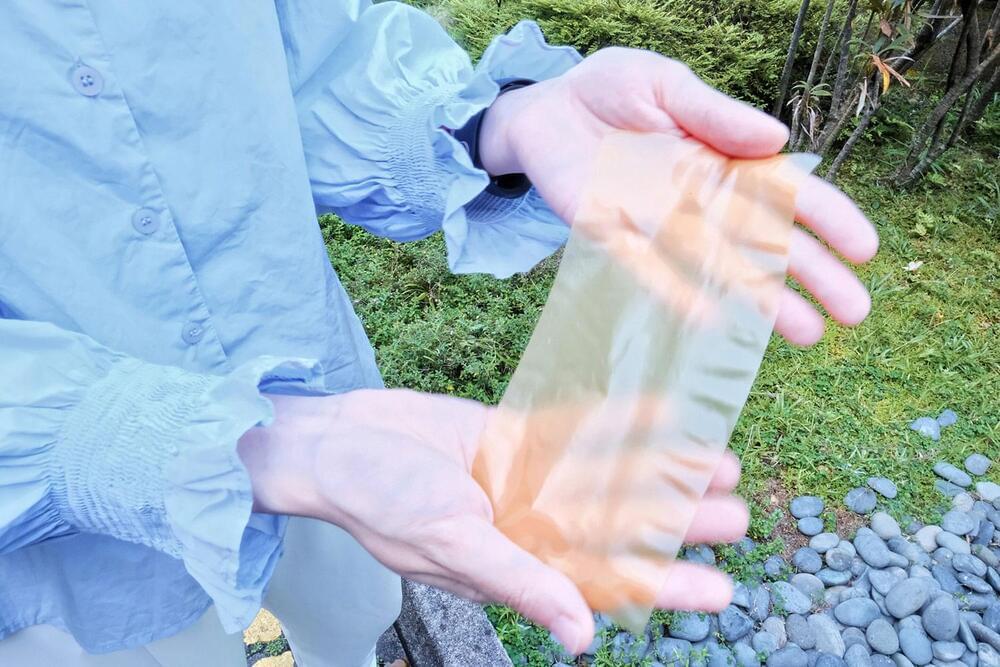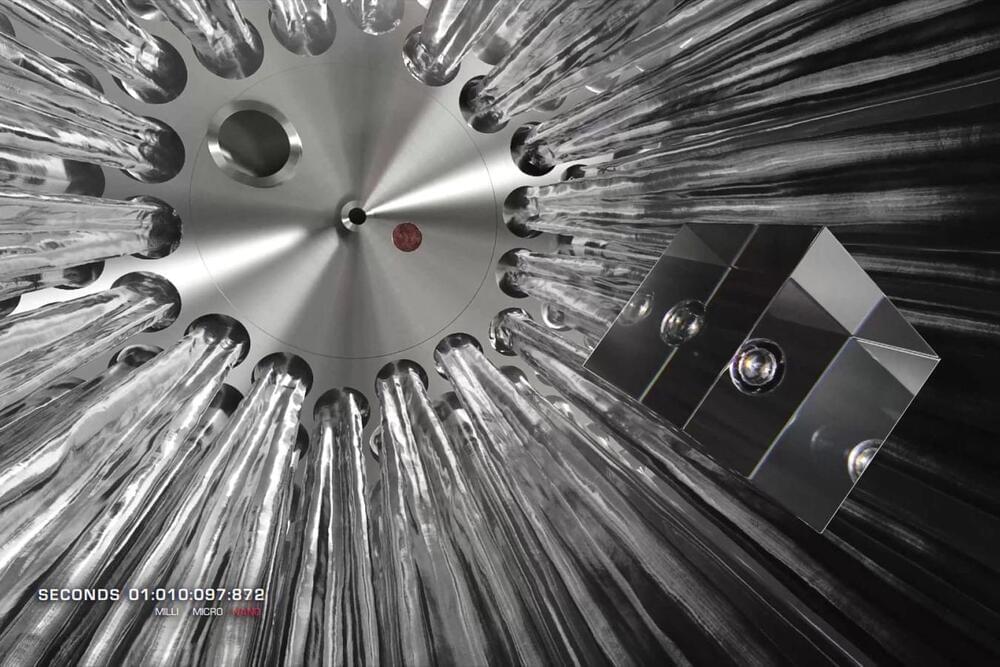Apr 7, 2022
Shock result in particle experiment could spark physics revolution
Posted by Shubham Ghosh Roy in category: particle physics
Scientists find a sub-atomic particle’s mass is at odds with one a theory underpinning modern physics.
Scientists find a sub-atomic particle’s mass is at odds with one a theory underpinning modern physics.
Physicists are using quantum math to understand what happens when black holes collide. In a surprise, they’ve shown that a single particle can describe a collision’s entire gravitational wave.
The W boson, one of the tiniest, most elementary particles in the known universe is causing a big ruckus in the field of particle physics.
New findings about the particle, which is fundamental to the formation of the universe, suggest its mass may be far heavier than predicted by the Standard Model of particle physics —the theoretical “rulebook” that helps us make sense of the building blocks of matter. If true, it could signal a monumental shift in our understanding of the universe.
According to the Standard Model, W bosons (together with another particle, called Z bosons) are responsible for the weak nuclear force, one of the four forces that hold together all observable matter in the universe. The other forces include gravitational force (for which there is currently no explanation in the Standard Model), electromagnetic force, and the strong nuclear force.
In particle physics, data long outlives the detectors that generate it. A decade ago the 4,100-metric-ton Collider Detector at Fermilab (CDF) reached the end of its life and was shut down, stripped of its parts for use in other experiments. Now a fresh analysis of old CDF data has unearthed a stunning discrepancy in the mass of an elementary particle, the W boson, that could point the way to new, as yet undiscovered particles and interactions.
The W boson is massive, some 80 times heavier than a proton. Crucially, the W boson is responsible for certain forms of radioactive decay, allowing neutrons to convert into protons. Because its mass is constrained by (and itself constrains) many other particles and parameters within the Standard Model—particle physicists’ theory of fundamental particles and how they behave—the W boson has become a target for researchers seeking to understand where and how their best theories fail.
Although physicists have long known the W boson’s approximate mass, they still do not know it exactly. Plugging data into the Standard Model framework, however, predicts that the so-called W mass should be 80,357 mega-electron-volts (MeV), plus or minus 6 MeV. (One MeV is about twice the mass-energy contained within a single electron.) But in a new analysis published on Thursday in Science, physicists on the CDF collaboration have instead found the W boson mass to be 80,433.5 ± 9.4 MeV. The new measurement, which is more precise than all previous measurements combined, is nearly 77 MeV higher than the Standard Model’s prediction. Although these numbers differ by only about one part in 1,000, the uncertainties for each are so minuscule that even this small divergence is of enormous statistical significance—it is exceedingly unlikely to be an illusion produced through sheer chance. The well-studied W boson, it seems, still holds plenty of secrets about the workings of the subatomic world—or at least about how we investigate it. Taken by surprise, particle physicists are only beginning to grapple with the implications.
In a laboratory under a mountain, physicists are using crystals far colder than frozen air to study ghostly particles, hoping to learn secrets from the beginning of the universe. Researchers at the Cryogenic Underground Observatory for Rare Events (CUORE) announced this week that they had placed some of the most stringent limits yet on the strange possibility that the neutrino is its own antiparticle. Neutrinos are deeply unusual particles, so ethereal and so ubiquitous that they regularly pass through our bodies without us noticing. CUORE has spent the last three years patiently waiting to see evidence of a distinctive nuclear decay process, only possible if neutrinos and antineutrinos are the same particle. CUORE’s new data shows that this decay doesn’t happen for trillions of trillions of years, if it happens at all. CUORE’s limits on the behavior of these tiny phantoms are a crucial part of the search for the next breakthrough in particle and nuclear physics—and the search for our own origins.
“Ultimately, we are trying to understand matter creation,” said Carlo Bucci, researcher at the Laboratori Nazionali del Gran Sasso (LNGS) in Italy and the spokesperson for CUORE. “We’re looking for a process that violates a fundamental symmetry of nature,” added Roger Huang, a postdoctoral researcher at the Department of Energy’s Lawrence Berkeley National Laboratory (Berkeley Lab) and one of the lead authors of the new study.
CUORE—Italian for “heart”—is among the most sensitive neutrino experiments in the world. The new results from CUORE are based on a data set ten times larger than any other high-resolution search, collected over the last three years. CUORE is operated by an international research collaboration, led by the Istituto Nazionale di Fisica Nucleare (INFN) in Italy and Berkeley Lab in the US. The CUORE detector itself is located under nearly a mile of solid rock at LNGS, a facility of the INFN. U.S. Department of Energy-supported nuclear physicists play a leading scientific and technical role in this experiment. CUORE’s new results were published today in Nature.
Today at the Quark Matter 2022 conference, the ATLAS Collaboration announced the observation of tau-lepton pairs created when particles of light – or photons – interact during lead-ion collisions. The result opens a new avenue for measuring how magnetic the tau lepton is – a property sensitive to new particles beyond the Standard Model.
In everyday life, two crossing beams of light follow the rules of classical electrodynamics and do not deflect, absorb or disrupt one another. But, in quantum electrodynamics, things are different. Lead ions accelerated to high energy by the LHC are surrounded by an enormous flux of photons. For a short moment, these photons can interact and transform into a particle–antiparticle pair, such as a pair of tau leptons. These interactions are called ultra-peripheral collisions, which ATLAS physicists used to observe light-by-light scattering in 2019.
Rather than colliding head-on at the centre of the ATLAS detector, the accelerated lead ions pass by each other unscathed. This provides a uniquely clean environment for physicists to study collisions of photons into a pair of tau leptons. Further, the rate of tau-lepton creation scales to the fourth power of the number of protons in the ion, which is 82 for lead.
At the Quark Matter conference today and at the recent Rencontres de Moriond conference, the LHCb collaboration presented an analysis of particle collisions at the Large Hadron Collider (LHC) that may help determine whether or not any antimatter seen by experiments in space originates from the dark matter that holds galaxies such as the Milky Way together.
Space-based experiments such as the Alpha Magnetic Spectrometer (AMS), which was assembled at CERN and is installed on the International Space Station, have detected the fraction of antiprotons, the antimatter counterparts of protons, in high-energy particles called cosmic rays. These antiprotons could be created when dark-matter particles collide with each other, but they could also be formed in other instances, such as when protons collide with atomic nuclei in the interstellar medium, which is mainly made up of hydrogen and helium.
To find out whether or not any of these antiprotons originate from dark matter, physicists therefore have to estimate how often antiprotons are produced in collisions between protons and hydrogen as well as between protons and helium. While some measurements of the first have been made, and LHCb reported in 2017 the first-ever measurement of the second, that LHCb measurement involved only prompt antiproton production – that is, antiprotons produced right at the place where the collisions took place.

The British James Dyson Foundation presented the first Sustainability Award to Carvey Ehren Maigue, an electrical engineering student in the Philippines. He was awarded for creating new material from recycled crop waste that has the ability to transform ultraviolet (UV) rays from the sun into electrical energy. The technology could soon be turning the windows and walls of buildings into a rich new source of electricity.
The invention of the Filipino university student is called AuREUS (Aurora Renewable Energy and UV Sequestration). Both AuREUS devices (Borealis Solar Window and Astralis Solar Wall) use the same technology used in the beautiful Northern and Southern lights. High energy particles are absorbed by luminescent particles that re-emit them as visible light. A similar type of luminescent particles (derivable from certain fruits and vegetables) were suspended in a resin substrate and is used as the core technology on both devices.

In a world where deforestation directly leads to biodiversity loss, disrupts the water cycle, and alters rainfall, looking for alternatives to recycle or produce paper is more important than ever.
Scientists at Nanyang Technological University, Singapore (NTU Singapore) have developed a pollen-based paper that, after being printed, can be erased and reused multiple times without any damage to the paper.
Continue reading “Sunflower pollen-based paper that you can print on and unprint” »

Oxford spinoff First Light Fusion says its novel “projectile” approach offers “the fastest, simplest and cheapest route to commercial fusion power.” The company is now celebrating a significant breakthrough with its first confirmed fusion reaction.
The nuclear fusion space is heating up, if you’ll pardon the pun, as the world orients itself toward a clean energy future. Where current nuclear power plants release energy by splitting atoms in fission reactions, fusion reactors will release energy in the same way the Sun does – by smashing atoms together so hard and so fast that they fuse into higher elements.
Continue reading “Oxford spinoff demonstrates world-first hypersonic ‘projectile fusion’” »